TAGGED AS: marvel cinematic universe, movies
Jonathan Majors’ debut as Kang the Conqueror in Ant-Man and the Wasp: Quantumania has been a headline ever since it was first revealed to the world in September of 2020, and it remained part of the chatter even as most of the Phase 4 films and television series avoided the character entirely. The one key exception: Majors’ debut as a variant of Kang in Loki‘s season 1 finale.
Nevertheless, the anticipation for Kang – later revealed to be the big threat of Marvel Studios’ current Multiverse Saga – remained high. And although Quantumania left critics split, Majors’ performance as Kang stood out despite any other opinions or debate. So, at least, that mission was accomplished.
But those who saw the film over the weekend may be wondering how Kang carries on into the rest of Phase 5 and 6. Based on the film’s stinger scenes, He Who Remains’ own testimony in Loki, and the character’s comic book history, we have a few guesses that might clear up your questions about the antagonist and his future in the Marvel Cinematic Universe.
Spoilers for Quantumania and other Phase 4 Marvel projects follow.
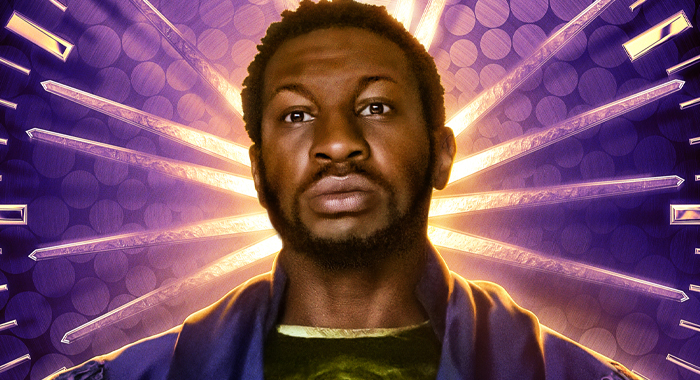
(Photo by ©Marvel Studios)
Back in Loki, He Who Remains (Majors), a variant of Kang, explained why he – and he alone – needed to establish the Sacred Timeline and prevent variants like Loki (Tom Hiddleston) and Sylvie (Sophia Di Martino) from creating divergent timelines and resuming the great Multiverse war. As later confirmed by Kang in Quantumania, the mind behind this war in all realities is Kang.
The establishment of the Sacred Timeline and the Time Variance Authority ensured the destruction caused by He Who Remains’ variants stopped and that it never happened. Or, to put it another way, the Multiverse as we now know it did not exist until Sylvie killed He Who Remains. It is, in itself, a variant Multiverse.
In Quantumania terms, the emptiness of the Quantum Realm as glimpsed in Ant-Man and the Wasp was its true state until the Multiverse was restored. After that, its civilization and Janet’s (Michelle Pfeiffer) encounter with Kang became the true history of the microscopic universe. It is mind-melting to consider, as it retroactively makes Kang a presence in the Ant-Man movies despite not being part of the earlier films’ development or concept.

(Photo by Chuck Zlotnick/©Marvel Studios)
And speaking of Quantumania, all the ballyhoo about Kang’s debut is tempered by his seeming demise in the film’s climax. How can he be the primary antagonist of the Multiverse Saga if he’s dead?
He presents one possible solution as he often mentions time works differently for him – an ability he shares with his comic book counterpart – but another answer comes from the fact that he recognizes only one true threat to his aims: himself.
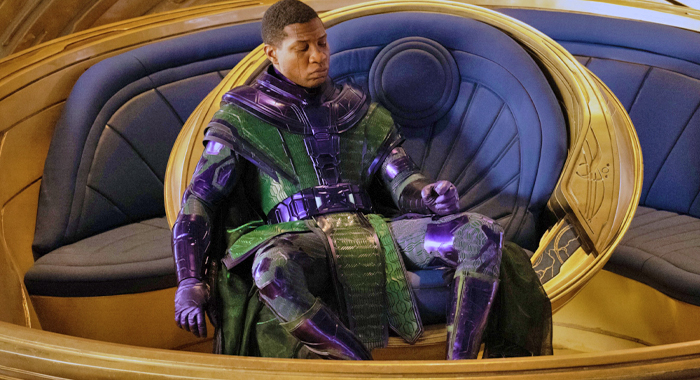
(Photo by Jay Maidment/©Marvel Studios)
Despite He Who Remains’ worries about the Multiversal war resuming upon his death, the cross-reality conflict is seemingly in an armistice. From the standpoint of viewers watching Loki in 2021, nothing much changed in the larger universe following his death except a handful of characters discussing the Multiverse and interacting with variants. For characters like Hawkeye (Jeremy Renner), Moon Knight (Oscar Isaac), Ms. Marvel (Iman Vellani), and Kate Bishop (Hailee Steinfeld), reality is still as strange, troubling, and wonderful as it has been since the Blip began.
Quantumania‘s first stinger scene answers the why of this apparent multiversal stability. Instead of going to war, the other Kangs formed a council of all their variants (all played by Majors) to shepherd the Multiverse. Based on the scene, the council is led by a variant called Immortus – at least, we’re naming him that, as he resembles a Kang variant in the comics who goes by that name. Aiding him are Rama-Tut, identified by his pharaonic nemes, and a third variant some are claiming to be Iron Lad – yes, comic book Kang even became a Young Avenger at one point.
All three are notable comic book characters for various reasons. To start, they represent key versions of Kang at various points in his own personal timeline. Rama-Tut, for example, is the first Kang any Marvel hero ever encountered. Immortus, meanwhile, lived long enough to regret his earlier actions and occasionally works with the heroes to thwart the plans of his younger self. Iron Lad, meanwhile, is one of the youngest Kangs to hit the scene, traveling through time in the hopes he can avoid becoming Kang the Conqueror.

(Photo by ©Marvel Studios)
This idea is also brain-melting as it means an infinite number of Kangs can appear in Marvel films and TV shows with the ultimate Kang of the fifth and sixth Avengers films still lying in wait (or, perhaps, the Kang of Quantumania returning).
Thankfully, the principle Kangs have easily identifiable visual differences and titles to distinguish them. Immortus adopts a judicial air, Rama-Tut – for reasons we’ll discuss in a moment – fancies himself an Egyptian Pharaoh – and the possible Iron Lad reflects a science fiction style familiar to Captain Marvel (Brie Larson) or the Guardians of the Galaxy’s spacefaring adventures.
As for any of the other Kangs glimpsed in the council chamber? That remains to be seen, but their multitude speaks to one of the ways Kang differs from The Infinity Saga’s Thanos (James Brolin). Where the latter sought to halve the universe in order to sustain it, Kang seeks dominion over everything in all of his manifestations.
Which leads to one curious aspect of the mid-credit stinger. Immortus only calls the council together because a mysterious “they” are reaching too far into the Multiverse. Presumably, he means the heroes of the MCU’s primary Earth, now identified as Earth-616 following the events of Doctor Strange in the Multiverse of Madness. Have the Kangs been isolating that reality for a reason? One thing to consider: it is apparently absent a Kang of its own.

(Photo by ©Marvel Studios)
So with Quantumania‘s Kang seemingly dead and many others ready to take his place and fulfill their collective ambition for dynasty, where might we see him (or a variant) next?
The end-credit stinger pretty much spells this out: he will appear again in the second season of Loki. Even before Quantumania‘s release, this was a pretty firm eventuality. Season 1 ended with Loki returning to a TVA festooned with statues of the man’s countenance. But as with all things concerning Kang, it is unclear which one is now the acknowledged founder of the TVA or where on his timeline any of this is occurring.
The Quantumania scene only deepens this mystery as it shows Loki and Mobius M. Mobius (Owen Wilson) traveling to an 19th century display of a new mechanical wonder invented by one Victor Timely (Majors yet again). Mobius, still seemingly unconvinced that his boss is a bad guy, expresses doubt that Timely is the “terrifying figure” Loki painted Kang to be. Frankly, we doubt it, too. Until Loki streams later this year and the scene occurs in context, it really is open-ended. Timely could be a man who looks like Kang, the original genius who sparks the Multiversal war, yet another Kang, the new founder of the TVA, Quantumania‘s Kang somehow surviving in the past, or even He Who Remains.
It is yet another brain-melting idea that probably would not work if Majors were a less versatile actor. And even then, who knows how many different versions of Kang Marvel can credibly set up and use before the Multiverse Saga ends in 2026 with Avengers: Secret Wars.
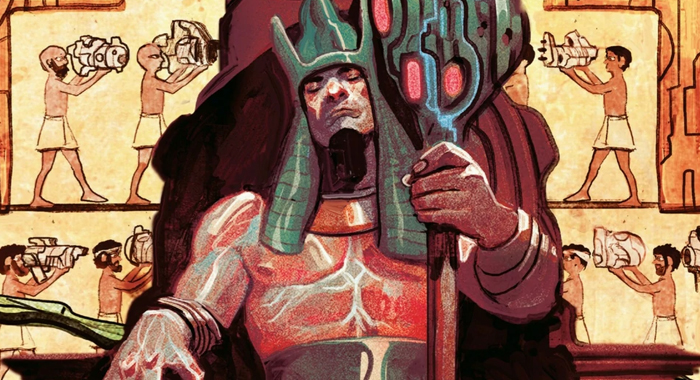
(Photo by ©Marvel Comics)
One surprising place a Kang could turn up is 2025’s Fantastic Four. Although details on the film are still sparse, the appearance of Rama-Tut in Quantumania could indicate he will be the foe the FF must face in their debut MCU adventure.
As first presented in the pages of the Fantastic Four (vol. 1) #19, Rama-Tut was a time traveler from the 30th century. Crashing to Egypt circa 2900 BCE, he eventually declared himself Pharaoh thanks to an army of robots stowed aboard his time ship. The FF encounter him while using a replica of Dr. Doom’s time machine to find a cure for an associate’s blindness (a more loaded statement than we have time to explore), but the clue that led them to the past turned out to be a ruse so Rama-Tut could meet Reed Richards, who might be his ancestor, and enslave the whole group. The four foment a rebellion and Rama-Tut flees to the modern day, teaming up with Dr. Doom to get his revenge.
We doubt the Fantastic Four film will introduce Dr. Doom’s time machine – or even Doom himself for that matter – but it is easy enough to imagine Rama-Tut appearing in the present day to restore his, ahem, dynasty in Egypt. He might even blame the FF for its earlier downfall despite the fact they never encountered him before. More mind-bending concepts? Sure, but a well-made Fantastic Four has to shoot for the skies in terms of out-there science fiction premises. It would also save Doom for a subsequent film or saga.
This is wild speculation, of course. But with Fantastic Four serving as the first Phase 6 film, it could delve further into Kang’s past and future before all is revealed in Avengers: The Kang Dynasty.
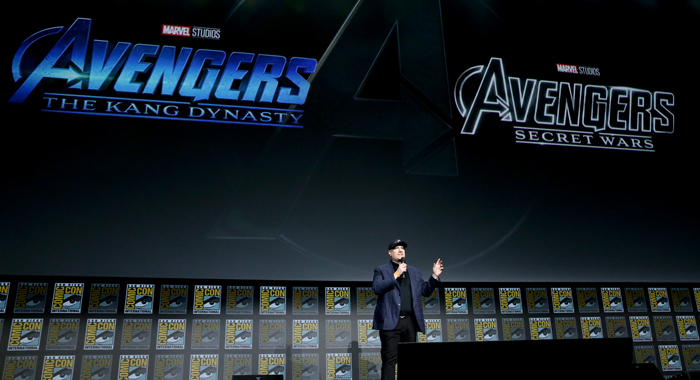
(Photo by Jesse Grant/Getty Images)
As revealed at the 2022 San Diego Comic-Con Marvel Studios presentation, the Multiverse Saga will conclude with a two-part Avengers spectacular: The Kang Dynasty and Secret Wars. Since the conclusion is still three-plus years away, we’ll avoid too much speculation about it, but we will take a look at part one as Quantumania‘s Kang literally invokes its subtitle.
Since dynasty is the ultimate goal of the Kangs, how will they achieve it? One thing they absolutely must do is take control of the Multiversal incursions referenced by Kang in Quantumania and the Illuminati in Multiverse of Madness. The overlapping of realities is a threat to the whole complex network of everything. As explained to Doctor Strange (Benedict Cumberbatch), incursions will ultimately destroy the realities involved, offering Kang less to rule. Getting that problem in check is likely why a Kang created the new version of the TVA. But was he working on orders from the council?
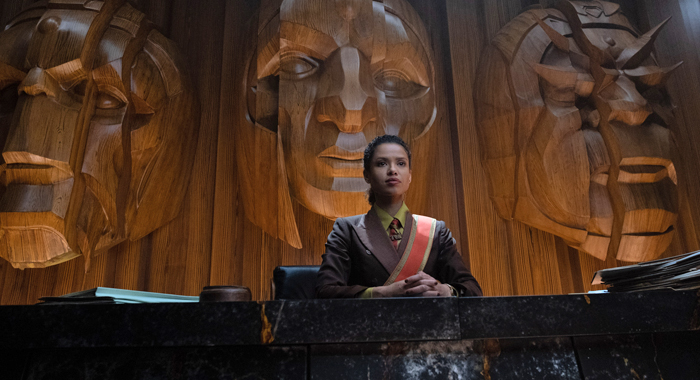
(Photo by Chuck Zlotnick/©Marvel Studios)
Second, the very notion of a dynasty requires Kang have progeny to continue his domain. This finally brings us to Loki‘s Ravonna Renslayer (Gugu Mbatha-Raw). Back in the comics, she was a princess in one of the few corners of creation Kang had yet to conquer. After he fell in love with her, he soon experienced grief when one of his generals murdered her. But as Kang can travel time and all potential outcomes, he retrieved a variant of her from a reality where he died instead. Nevertheless, the two have a hard time getting along, becoming foes as often as they are lovers. Various comic stories have seen her serving as Moon Knight during his reign as Rama-Tut, Kang learning the errors of his way after experiencing her death multiple times, and Ravonna becoming a conqueror herself.
Will it all work out for Kang? Well, as he is the villain, probably not. But the existence of an MCU Ravonna suggests there could be some sort of happier resolution for him following the Secret Wars and, perhaps, he may accept that he must abdicate his grand dynastic desire. That would also prove he is different from Thanos. And, really, he needs that for the Multiverse Saga to end in a satisfactory way.
Unless, of course, all of this is a ruse and Doom ultimately supplants him as the real villain of the saga.
In the interim, Kang will continue to appear, befuddling the heroes and melting the minds of audiences all over the Multiverse.
Ant-Man and the Wasp: Quantumania is currently in theaters.